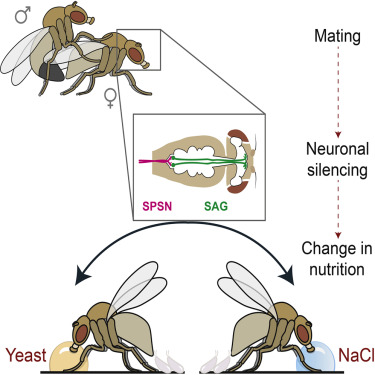|
|||||||||||||||
|

CLICK ON weeks 0 - 40 and follow along every 2 weeks of fetal development
|
||||||||||||||||||||||||||||
Pass the salt — How pregnancy drives food cravings Pregnancy is famous for inspiring relentless food cravings in women, who allegedly become consumed by a desire to eat odd foods. It is commonly believed that such cravings are not just arbitrary, but are linked to the nutritional needs of the fetus they carry. This is particularly true for nutrients such as proteins and salt. Results of this study are published in the September 24th edition of the journal Current Biology. "Nutrition is a highly complex topic. To understand how the brain regulates nutrient intake, you need to work in an organism that gives you access to a lot of diverse technologies. In that respect, the fruit fly is unbeatable," says Dr. Ribeiro. "We wanted to exploit these tools to uncover how the female fly's food preferences changed after mating. Many mammalian species increase their preference for salt during pregnancy; but until now it was not known if the fruit fly shared this behavior."
"We found that there is a direct correlation between the amount of salt in the diet and the amount of eggs they were able to produce," explains Dr. Ribeiro. "It seems that salt is important everywhere, from flies, to elephants, to humans. It also suggests the existence of unifying biological principles underlying this behavior that could be traced across species." Surprisingly, even though different levels of salt directly influenced offspring production, the researchers discovered that the salt craving was not based on the precise needs of the body. On the contrary, "even if their egg production was disabled, mated females showed increased salt preference, demonstrating that salt-craving was independent of the actual needs of the body," says Dr. Ribeiro.
Just as in humans, the "tongue" of the fly becomes much more responsive to the taste of salt, leading her to prefer saltier food. The key question became: "What is the biological mechanism that leads to this change in salt sensation in pregnant animals?"
By piecing together this complicated puzzle, researchers were able to [1] demonstrate that salt-craving exists in flies much as it does in mammals. And this craving [2] plays an important role in the fly's reproduction. The researchers were also able to identify the trigger for salt-craving and map several steps in it's neural circuitry that brings about this behavioural change. "Now we move on to the next question, which is to identify how the brain's response to salt changes after mating to bring about this cross-species behavior." says Dr. Rebeiro. Abstract Highlights This study was published today (September 24) in the scientific journal Current Biology. See: Walker SJ, Corrales-Carvajal VM, Ribeiro C. (2015). Postmating circuitry modulates salt taste processing to increase reproductive output in Drosophila. Current Biology. DOI: 10.1016/j.cub.2015.08.043. |
Sep 29, 2015 Fetal Timeline Maternal Timeline News News Archive
|
||||||||||||||||||||||||||||


